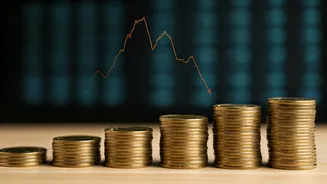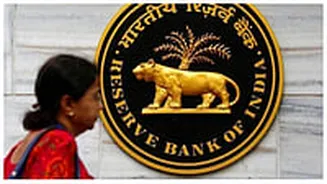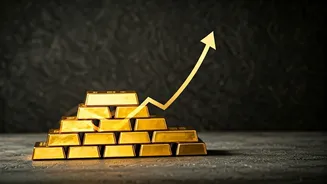Credit Growth Slowdown
The Reserve Bank of India reported that the pace of bank credit growth had decelerated to 7.3% during September. This marks a notable change in the financial
landscape, reflecting either a cooling down of demand for loans or more conservative lending practices by banks. The data, provided by the RBI, offers a crucial indicator of economic activity within the country. A decline in credit growth might suggest decreased investment or consumption, potentially impacting overall economic expansion. However, the exact reasons need deeper investigation, and various factors could influence these trends, warranting further analysis to discern the complete picture. The RBI's consistent monitoring of such data helps ensure financial stability and guides monetary policy decisions.
Factors at Play
Several elements could have played roles in the observed slowdown. One primary reason could be a decrease in demand for credit from businesses and individuals. This can result from factors like a general economic slowdown, a decrease in business investment, or a reduction in consumer spending. On the other hand, banks might have become more cautious about lending. Increased scrutiny of loan applications, tougher eligibility criteria, or a more risk-averse approach could limit the disbursement of loans. Further investigation into specific sectors to understand where credit demand changed is essential. Monitoring these factors is crucial for policymakers and financial institutions to make informed decisions and ensure continued financial stability. A nuanced approach, considering both demand and supply dynamics, will offer a comprehensive understanding of the situation.
Impact and Implications
The implications of slower credit growth can be far-reaching, influencing economic growth, employment, and investment. Reduced credit availability can hinder business expansion, impacting job creation and overall economic prosperity. Similarly, a decline in consumer credit might curb spending and affect various industries. On a positive note, slower credit growth might also indicate a more stable and less risky lending environment, reducing the possibility of non-performing assets for banks. The RBI's actions are important to stimulate the economy without risking financial instability. To mitigate potential negative consequences, the RBI might consider adapting monetary policies. Monitoring the impact of such adjustments on credit growth and the broader economy will be critical for ensuring sustainable and balanced growth.
Future Outlook
Looking ahead, the direction of bank credit growth will depend on several factors, including the global and domestic economic conditions, interest rate policies, and the level of investor confidence. Changes in these areas may significantly affect the demand for credit. Economic forecasts, government initiatives, and consumer sentiments will also shape future lending patterns. The RBI will likely continue to observe market trends and implement suitable measures to ensure both economic growth and financial stability. Keeping a close watch on these factors and being adaptable will be key for navigating the changing economic landscape and ensuring the banking sector’s health. Continuous monitoring and strategic planning will be essential for the sector to adapt and support the country's economic goals.















